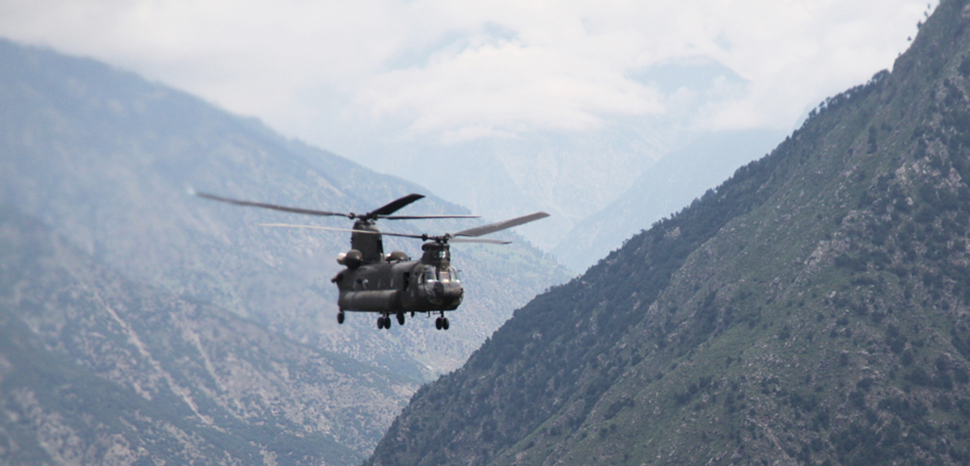Manish Rai

For decades, the Pakistani establishment has termed the Baloch insurgency a low-intensity conflict confined mostly to Balochistan, the country’s largest province by territory. But that seems to have changed, as a spate of attacks this year clearly demonstrates that the insurgency has entered into a new phase.
Despite Pakistani security forces claims of a sweeping crackdown on rebels, the insurgency’s lethality has increased many folds in recent times. As a result, more ferocious attacks, such as suicide bombings, high-profile targeted attacks, and kidnappings of high-ranking army officials are now shaping the course of Pakistan’s oldest separatist insurgency.
In particular since the start of this year, a remarkable shift in the strategy of Baloch militants has been evident. It started with a large-scale attack in January on a security checkpoint in Balochistan’s Kech region, which borders Iran. Less than a week later, another bold attack was carried out by militants from the Baloch Liberation Army (BLA) suicide wing (the Majeed Brigade). In these attacks, militants stormed two security camps in Balochistan’s Nushki and Panjgur districts.
Both incidents were notable in the modern weaponry used by the militants, which at times were even more advanced than the Pakistani security forces. And, while it’s true that casualty numbers provided by both sides are generally difficult to independently verify, the attacks undoubtedly rocked not only Balochistan but the whole country as well.
Then, months later in April, the BLA’s first female suicide bomber – Shari Baloch, a research scholar and teacher – attacked China’s Confucius Institute in the southern port city of Karachi, killing four, including three Chinese nationals. This attack reflected a dramatic shift in strategy, as it aimed to expand the Baloch conflict to Pakistan’s major urban centers. It echoed an earlier attack by the Baloch Nationalist Army (BNA) on Lahore’s business district, which killed three people earlier in the year.
Targeted kidnappings, another new tactic, appeared in mid-July when a Pakistani army lieutenant colonel was kidnapped by the BLA’s Special Tactical Operations Squad while on holiday near the hill station of Ziarat in Balochistan. The Pakistani army subsequently launched a sweeping operation to rescue the senior officer, but he was ultimately killed.
More recently, an unprecedented claim was made by the spokesperson of Baluch Raaji Aajoi Sangar (BRAS), an umbrella group of four separatist Baluch groups, in early August: the group claimed to have shot down a Pakistani military chopper in Balochistan’s Lasbela district. Army media quickly rejected the claim as disinformation. However, one month later, another helicopter belonging to the Pakistan Army Aviation Corps crashed near Balochistan’s Harnai district. The Baloch Liberation Army (BLA) claimed that its cadres had shot down the helicopter while flying a rescue mission. This time, the Army confirmed the downing of the chopper without giving any specific reason for the crash. The claims of the Baloch militants can’t be verified but there is a high possibility that they now possess some form of anti-aircraft capabilities.
This would make sense given the evolving geopolitics of the region. After the US withdrawal from Afghanistan last year, large quantities of highly sophisticated weapons, which were once used by Afghan security forces, began making their way to the black market. Many of these US-made weapons have now ended up in the hands of Baloch armed groups, including M16A2 and M16A4 assault rifles, Trijicon ACOG optics, and M203 under-barrel grenade launchers. In addition to small firearms and RPG-7 pattern rocket launchers, Baloch insurgents are now using various machine guns like PK(M) and MG3 variants. Occasionally, insurgents have also been spotted using some heavy machine guns (HMG).
In addition to being better-armed, Baloch armed groups have also gradually moved toward consolidation of what was previously a fragmented insurgency. Over the last few years, insurgent groups have either merged or formed tactical alliances to put up a united fight against the Pakistani state. In doing so, they are better able to pool resources and achieve the kind of coordination needed to carry out complex operations. Also, the leadership of the armed groups has shifted from tribal chiefs to the well-educated and highly motivated Baloch middle class. With these new ranks, Baloch insurgents are transforming the insurgency into a guerrilla warfare campaign.
It’s a hard truth that, over time, the Baloch insurgents have adopted fighting tactics very similar to Tehreek-E-Taliban Pakistan (TTP). Pakistan policymakers have to understand that Baloch armed conflict can’t just be dealt with by military means. Balochistan requires a political solution that can only be achieved through talks. Currently, if the Pakistani state is willing to talk and negotiate with the Pakistani Taliban (TTP), then why not follow this approach with Baloch armed groups as well? Until Islamabad does just that and responds to some of the demands of this long-running separatist movement, the insurgency will surely continue to grow.
No comments:
Post a Comment